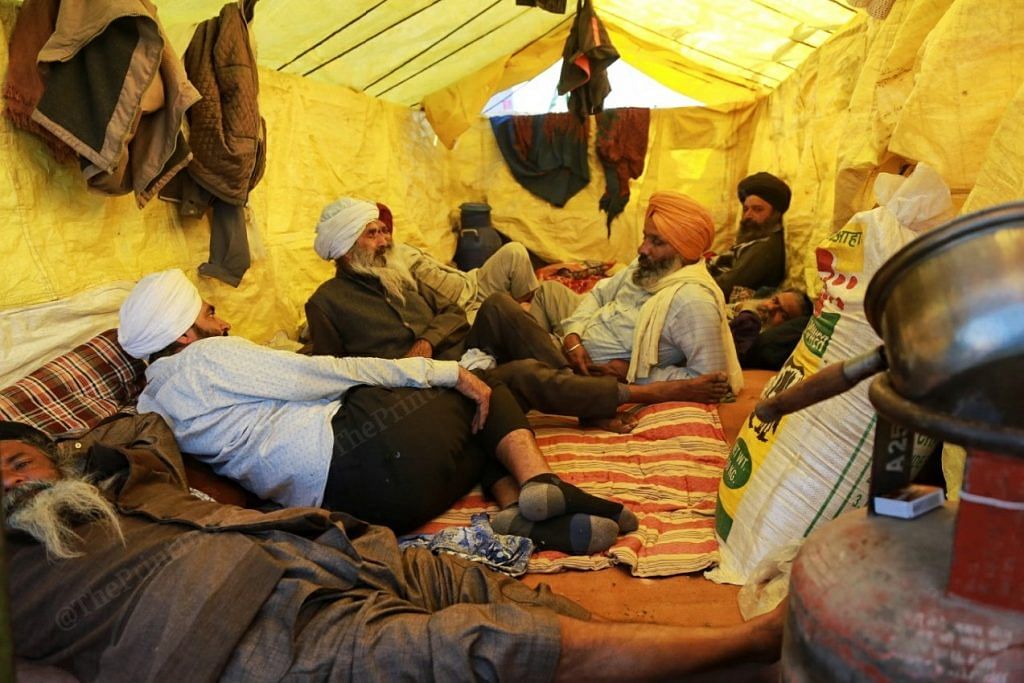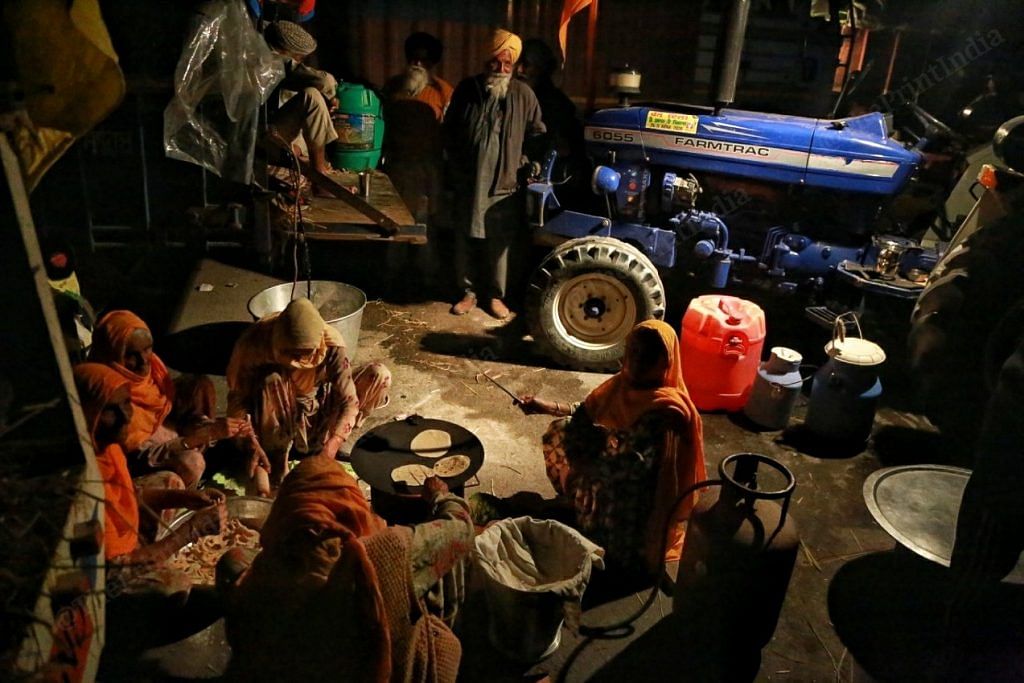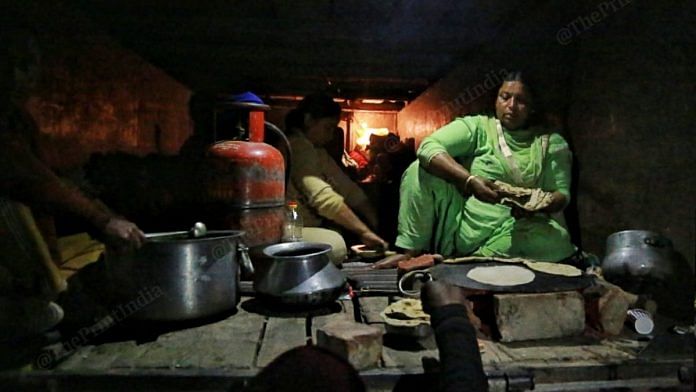A picture from this week’s farmers’ protest or Kisan Dilli Kooch has gone viral. Many on social media are sharing the picture of the farmers with emotional captions such as ‘The Annadata’, ‘The Real Hero’ and ‘The One Who Feeds’.
The picture is of three farmers, two sitting on the road and another lying down while a water cannon drenches them in cold water.
This makes them the ‘hero’ for rural India and the middle class. For growing the food on their plate and for facing a government that wants to push them back, barricade them and attack them with water and tear gas on the national highway. These heroes are on the front pages of national newspapers, but many have questioned the absence of women in these pictures.
Every time farmers march to Delhi, there is a stark difference in the number of women and men. Even though women farmers have responded strongly to the call for protests this time, they are still missing from many of the visuals.
So, what is the reason? Are the women left behind not ‘farmers’? Are they just the ‘silent majority’? Why do these women never find a mention in the speeches of great leaders and in the writings of great writers? Even when they are seen tilling the fields and grazing the cattle.
To understand what is going on in the Indian countryside while the Annadata is on the highway, one needs to peek into the lives of these women, whose hardships are often forgotten.
Also read: Shambles over farmers’ protest shows Modi-Shah BJP needs a Punjab tutorial
Contributors to rural economy who work 15-hour days
Most women farmers wake up around 4 or 5 o’clock in the morning. Their day starts even before sunrise. Their whole life is about cattle and crops. During my assignments in rural India, I found out that most of these women have rarely been to a city. And you will be surprised to know that the only time that most of them have ever seen a city was when they were taken to a hospital during labour pain. Just look at the case of Guddi, a 30-year-old farmer, who has never been to any town.
A common sight while travelling in rural India is that of men resting while playing taash (cards) or smoking hookah. But women mostly end up making cow dung cakes even in the ‘rest hours’. For Kavita, from Haryana’s Rewari district, her Murrah buffaloes are her lifeline. But for women, their day doesn’t end with cattle and crops. They also have to take care of children and cook for the family.
Most women farmers don’t have any land to their name, but she spends all her life on it. Feeding the buffaloes, milking them and cleaning their sheds is what comprise her mornings. Her afternoons are spent in the fields threshing, replanting, harvesting, sunning the crops, and her evenings are spent making dung. She works 15-17 hours a day. And yet when we think of farmers and protests, she is missing.

Also read: Farmers chop vegetables for dinner, women make rotis — scenes after chaos at Delhi border
The long, difficult winter
In winters, a different kind of anxiety grips the peasant class. This anxiety is best captured in the famous story ‘Poos Ki Raat’ (A Winter Night) by Premchand. It’s about how the Halkus and Munnis of India guard the crops and water the fields on chilly winter nights, sometimes without a kambal (blanket).
Growing up in rural Haryana, a few images have been imprinted on my psyche forever. I grew up in a farmer’s family that only owned two kanals (one-fourth of an acre) of land. Like many other small land-holding families, we also had to rent an acre or two, in exchange for crops or on theka (share cropping). One of the lasting images in my mind is that of my mother watering the fields at 2 am. Because our turn to water the fields only came late at night.
I vividly remember the scene. After my mother and my elder brother (who was 15 at that time) returned from watering the crops, they would light the fire in the chulha and warm themselves. For half an hour, they would talk about if the crop would be good this year and how we would repay some debt or the other. As the flames of the chulha intensified, the sound of my mother sipping tea echoed in the courtyard. For hours after, her feet would be cold even in the quilt. Then she would get up again to feed the cattle at 5 am.

Also read: Farmers allowed to protest in Delhi after tear gas & water cannons, but will remain at border
The government must listen
The Kisan march is not limited to men only, it also represents those women who have been left behind in their homes. Those sitting by the chulha at 2 am. Right now, they are guarding their homes and fields. In such a season, when the men have left their villages to protest and brave lathis, all the responsibilities of farming is on the shoulders of women. They hope that the government will at least listen to their demands.
It is true that the farming community is not a monolith. It is divided into many groups — large landowners, middle-range farmers, small-landowners, labourers, etc. So, one may find different types of farmers in the protests and draw their own conclusions about them. But one will not be able to see the hidden farmers, the silent farmers — the women. Thanks to patriarchy, most of them are landless farmers. And women farmers don’t want their daughters to grow up the same way. It will only change if they have enough money. In the fear of reduced incomes, farmers have decided to brave tear gas shells and water cannons.
One day, while working in the fields, I told my mother about the wonderful story Premchand had written. I felt overwhelmed that a writer had written on a farmer’s family. Except that we had blankets and Premchand’s Halku and Munni did not.
Did Halku ever buy a blanket? What happened to Munni? Has the Sahookar stopped visiting them?
Views are personal.




Are you kidding me. My district Nawanshahr is number one district in India . Go and see how safe it is for human beings there. So you are telling me MP, Bihar and UP or even Delhi are safe for women?
People who rape children in temples and support the rapists are writing this?
How shameless are you people? Yes there was female foeticide but they are also fist one in Punjab to admit
We didn’t burn women for dowery, didn’t send our widows to temples to rot. We don’t mob lynch. I can write a book on , in how many ways Punjab is so much more human than you all.
Author is trying to project this protest as some kind of revolution while it doens’t have any basis. Farmer’s demand is purely political and doens’ have any logical reasoning.
What a load of rubbish… These farmers coming to delhi is great news – they can now choke on their stubble burning smoke!!
Finally an apolitical and sensible piece focusing on a very genuine issue.
I am surprised Print allowed such an article without overt politics and evil governments be published. Editorial oversight?
Thank you for this article. This perspective is important.
Punjab and Haryana are notorious for female infanticide. They barely respect women.